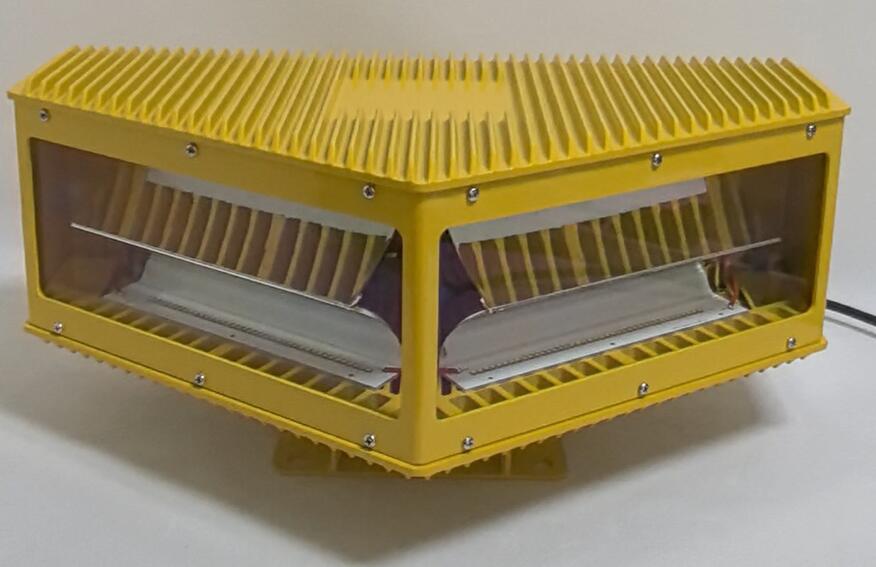Aviation Lamp for Chimney: Essential Lighting for Industrial Safety Compliance
Industrial chimneys, particularly those in power plants, refineries, and manufacturing facilities, pose significant risks to low-flying aircraft. To mitigate collision hazards, aviation lamp for chimney systems are mandatory under international aviation regulations. These specialized warning lights ensure that tall smoke stacks remain visible to pilots, day and night. This article examines the importance of aviation lamp for chimney installations, regulatory requirements, technological advancements, and best practices for optimal performance.
Why Chimneys Require Aviation Warning Lights
1. Height and Collision Risk
Industrial chimneys often exceed 100 meters (328 feet), making them potential obstacles for helicopters and low-altitude aircraft. Without proper lighting, they could become invisible in poor weather or darkness.

2. Compliance with Aviation Authorities
Regulatory bodies such as the ICAO (International Civil Aviation Organization), FAA (Federal Aviation Administration), and EASA (European Aviation Safety Agency) mandate that tall chimneys be equipped with aviation lamp for chimney systems. Non-compliance can result in penalties and increased liability risks.
3. Enhancing Pilot Awareness
Flashing or steady-burning aviation lamp for chimney lights provide critical visual cues, helping pilots maintain safe distances during takeoff, landing, and aerial surveys.
| aviation lamp for chimney |
Types of Aviation Lamps for Chimneys
1. Low-Intensity Red Lamps (LIRL)
Used for chimneys under 45 meters (148 feet).
Steady red lights for nighttime visibility.
2. Medium-Intensity White Strobe Lights (MIOL)
Required for chimneys between 45–150 meters (148–492 feet).
High-visibility white flashes for daytime and nighttime recognition.
3. High-Intensity White Strobe Lights (HIOL)
Essential for chimneys taller than 150 meters (492 feet).
Powerful strobes visible up to 20 nautical miles, ensuring early pilot detection.
4. Dual Lighting Systems
Some jurisdictions require red steady lights + white strobes for maximum visibility in all conditions.
Regulatory Standards for Aviation Lamps on Chimneys
1. ICAO Annex 14
Specifies light intensity, flash rate, and color for obstacle lighting.
Requires aviation lamp for chimney systems to be fail-safe and weather-resistant.
2. FAA Advisory Circular 70/7460-1L
Defines lighting requirements for structures in U.S. airspace.
Mandates regular inspections and maintenance.
3. EASA Certification (Europe)
Ensures compliance with EU aviation safety directives.
| aviation lamps for chimney |
Requires redundancy in lighting systems to prevent failures.
Key Features of Modern Aviation Lamps for Chimneys
1. LED Technology
Energy-efficient, long-lasting, and brighter than traditional incandescent bulbs.
Reduces maintenance frequency and operational costs.
2. Solar-Powered Options
Ideal for remote chimneys without reliable grid power.
Battery backup ensures continuous operation.
3. Corrosion-Resistant Housing
Industrial chimneys emit corrosive gases, requiring aviation lamp for chimney fixtures made from stainless steel or polycarbonate.
4. Remote Monitoring & Smart Controls
IoT-enabled systems allow real-time fault detection and automated brightness adjustment based on visibility conditions.
Installation Best Practices
1. Proper Spacing & Positioning
Lights must be installed at the top and midpoint of chimneys exceeding certain heights.
Multiple lamps ensure 360-degree visibility.
2. Routine Maintenance
Regular cleaning of lenses to prevent soot buildup.
Battery checks for solar-powered units.
3. Lightning Protection
Aviation lamps must be grounded to prevent damage from electrical surges.
Future Trends in Chimney Aviation Lighting
1. Adaptive Lighting Systems
Sensors adjusting light intensity based on ambient visibility (fog, smoke, or darkness).
2. Integration with Air Traffic Control (ATC) Systems
Automated alerts if lights malfunction, improving response times.
3. Drone Detection Compatibility
Future aviation lamp for chimney systems may include transponders to warn drones.
An aviation lamp for chimney is not just a regulatory requirement—it’s a vital safety measure protecting both aircraft and industrial infrastructure. With advancements in LEDs, solar power, and smart monitoring, these systems are becoming more efficient and reliable. Companies operating tall chimneys must prioritize compliance and invest in modern lighting solutions to ensure uninterrupted safety in increasingly crowded airspace.
